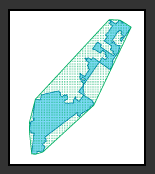The Blind Bartender 2 (with Boxing Gloves)
This is an extension to the main Blind Bartender Problem. It is worth reading that one first.
In this variation we still have a bartender faced with a square Lazy Susan with 4 glasses on it. The bartender wins as soon as they have all four glasses pointing up or all four glasses pointing down, irrespective of whether they realise that that is the current state.
Each move the bartender can flip up to two glasses over, but after each move the Lazy Susan is spun some random multiple of 90 degrees so the bartender no longer knows where the glasses they just flipped are. However, the twist in this variation is that the bartender is wearing boxing gloves and so xe can't feel which way up the glass is as they flip it. How can the bartender get all four glasses the same way up in a finite number of moves?
Answer below.
Hint: there are only 3 possible states it could start in, since the other state would win immediately.
Answer: I've drawn out a map of the possible states:
At the beginning you either win immediately or you are in one of the other three positions on the left. Notice that the dots and crosses could represent up or down and each of them could be rotated without loss of generality. Just as with the non-boxing glove variation, our key moves here are flipping two diagonal glasses or flipping two adjacent glasses.
Our first move is a diagonal flip, which solves the case for a pair of diagonally matching glasses, but leaves the other two cases unchanged. You may want to take a little time to convince yourself that a single glass which is the opposite way up from its three comrades produces the same state when you flip over two diagonally opposite glasses.
By doing this move we now know that we either have one up (or down), or two adjacent up. Since flipping over two diagonal ones won't do anything to either of these it makes sense to flip two adjacent glasses. For the one up (or down) case this returns itself again, but the two adjacent case is either solved or it goes to the two diagonal case.
Next, let's repeat the flipping of two diagonal glasses. This solves the diagonal case; which means we have either won, or we have a single one up (or down). This is a much improved situation. Now take any glass and flip it over. This definitely gets rid of the one up (or down) case, but we can be in any of the others.
The second half of this acts out in the same way as the first half. Once again, a diagonal flip checks that we don't have the diagonal case, then we can do another adjacent flip to get rid of the adjacent case. Finally another diagonal flip solves the one remaining case.
So overall this puzzle can be done in 7 moves, which is 2 more than the case without gloves.







